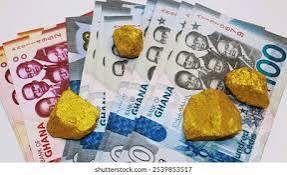
By Toma Imirhe
In a remarkable turnaround, the Ghanaian cedi has emerged as the world’s best-performing currency in 2025 – according to data from Bloomberg – appreciating nearly 16% against the U.S. dollar since April and trading at GH₵13.20 as of early May 2025.
This resurgence marks a stark contrast to its status as the worst-performing currency in 2022, when it lost over 55% of its value amid a debt crisis and inflationary spiral, with the exchange rate peaking at over GHc16 to US$1 subsequently. The cedi’s rebound has injected optimism into Ghana’s economy, easing inflation to 21.2% in April and revitalizing business confidence.
To be sure, many economists and financial market analysts, not drawn into politically motivated pessimism, had expected that the cedi’s sharp depreciation since late 2022 – including 19% depreciation in 2024 alone – would be stemmed upon the assumption of office of a more fiscally restrained and measured President John Mahama administration, but even they have been surprised by the sheer intensity of the currency’s rebound.
Several factors have driven the cedi’s dramatic rebound, one of them being the strategic interventions of the country’s central bank. The Bank of Ghana (BoG) has played a pivotal role through aggressive monetary tightening and forex market interventions. In March 2025, the BoG surprised markets with a 100 basis-point hike, raising the policy rate to 28% to curb inflation and attract foreign capital. By April, it injected US$490 million into the forex market, stabilizing liquidity and driving the interbank rate from GH₵15.36 to GH₵14.91 overnight. These measures, combined with a shift to spot-market forex auctions, have reassured businesses of dollar availability, reducing speculative dollar hoarding.
Another pivotal factor has been the commodity revenue windfall arising out of the ongoing price surges in two of Ghana’s main traditional exports, gold and cocoa. Ghana’s status as the world’s sixth-largest gold producer has proven transformative. Surging gold prices—from US$2,000 per ounce in 2024 to US$3,400/ounce in May 2025— boosted export revenues to US$11.6 billion in 2024,up from US$7.6 billion in 2023. This trend is now accelerating further. Instructively, Ghana earned US$2.72 billion from gold exports alone during first four months of 2025 up from US$900 million during the corresponding period of 2024.
Cocoa prices nearing US$10,000 per ton have further bolstered inflows, combining with gold, oil and non- traditional exports to take Ghana’s trade surplus to a long term high of US$4.3 billion in 2024 – despite continued cocoa production sluggishness and a backlog of unfulfilled supply contracts from the previous crop season that are now having to be met at barely a quarter of current market prices.
Yet another factor has been the impacts of the ongoing three year International Monetary Fund programme, which includes a US$3 billion financial bail out and an insistence on a return to demand management economic management policies to restore macroeconomic stability after the near-chaos that reigned from late 2022 to late 2023. The current government’s austerity measures—halting GHc 65 billion in arrears payments and reducing treasury bill yields from 28% to 15%— have curbed debt pressures and attracted renewed investor confidence. Political stability post-2024 elections, marked by President Mahama’s decisive reforms, have further solidified market trust.
There has been a key external factor too in that the dollar’s depreciation, driven by U.S. tariff wars and a falling Dollar Index (DXY) from 108 to 99 in 2025, have amplified the cedi’s relative strength. At the same time retaliatory tariffs from China and the EU have weakened global dollar demand, diverting capital flows to emerging markets like Ghana.
Going forward, government and optimistic financial analysts are looking up to the Gold Board initiative, the spike in gross international reserves to US$9.4 billion by the start of May, rising cocoa production – most of which is now being sold at close to the relatively high spot market prices – and the falling cost of imported petroleum products, to cumulatively discourage speculative demand for forex and further strengthen the cedi’s exchange rate over the coming months.
However, they acknowledge that potential pitfalls exist as the rebound remains fragile for now.
While the cedi’s rally is commendable, its longevity hinges on addressing structural vulnerabilities
One is Ghana’s commodity dependence amid global markets price volatility. Ghana’s reliance on gold and cocoa exports—accounting for 60% of forex earnings—leaves it exposed to price swings. A downturn in gold prices or cocoa yields (due to climate or disease) could reverse gains. The IMF warns that import dependency (especially on items such as, fuel and machinery) and a US$3.6 billion Eurobond repayment schedule between 2025 and 2028 could strain reserves
There are also monetary policy potential pitfalls. Despite inflation easing, the BoG remains cautious about rate cuts. Economists note that utility price hikes and lingering inflation threats – with inflation still more than twice the upper end of the 6–10% target – may delay monetary easing. Overly aggressive rate cuts could reignite inflation or speculative attacks on the cedi..
Then there are political and fiscal risks. Ghana’s public debt-to-GDP ratio, though improving, remains elevated at over 70%. The success of the Debt Sustainability Plan, to be unveiled in July 2025, is critical for maintaining investor confidence. Political strategy shifts or lax fiscal discipline could undermine reforms.
Finally the threat of global headwinds remains a clear and present danger. The U.S. Federal Reserve’s interest rate trajectory and China’s economic slowdown pose risks.



